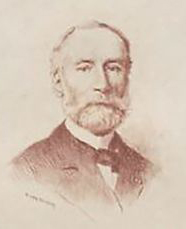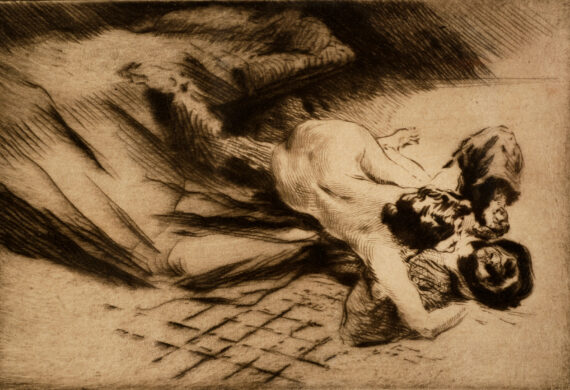TIGRANE POLAT (1874-1950)
The tragedy
TIGRANE POLAT (1874-1950)
The tragedy
100mm / 140mm
Etching
Etching is a process based on the action of nitric acid on a copper plate.
A copper plate is covered with a varnish on both sides and then engraved by the artist with an etching needle. The design is represented by a series of grooves that expose the copper. The plate is then subjected to the action of the acid which ""bites"" more or less deeply in to the lines drawn depending on the length of time applied, while leaving the protected parts intact.
The varnish is removed with turpentine essence revealing the artist's drawing, and the grooves of the drawing will be inked for printing. Depending on the angle at which the etching needle is held, the lines drawn will vary in thickness and depth producing a deeper tone of black on printing, thereby creating shadow or drape effects.

The son of a Sabalan princess and an Armenian father, and the godson of Nubar Pasha, Tigrane Polat was born in Alexandria where he was a pupil of the Jesuits. He completed his studies at the Lycée Michelet in Vanves, then went to the Académie Julian against the wishes of his father, who wanted to study law and stopped financially supporting him. He married a Polish woman, Justine. The couple settled in Charpont, near Dreux in 1910 where they raised their daughter Geneviève, known as "Wanda."
As an engraver, he illustrated numerous works for book lovers, including “The Well of Saint Clare” by Anatole France (1908), “A Passage by Verlaine” by Paul Valéry (1925), the “Fables” by Jean de la Fontaine (1929) or “Nymphs Dancing with Satyrs” by René Poylesva (1930).Frédéric Fringhian
